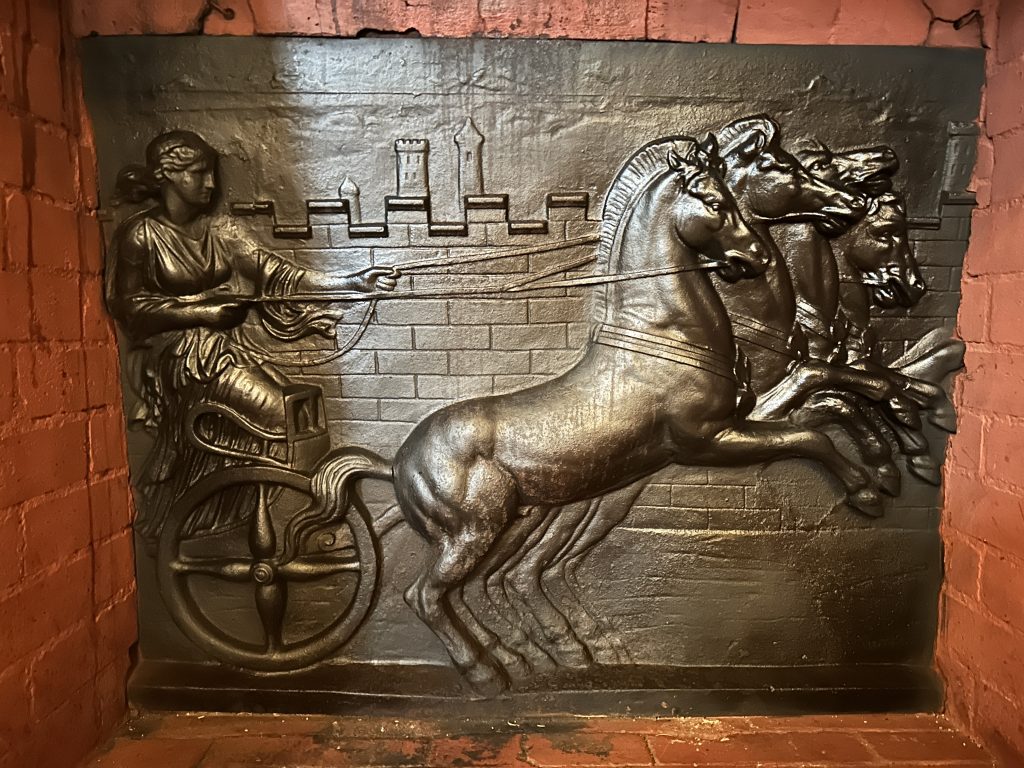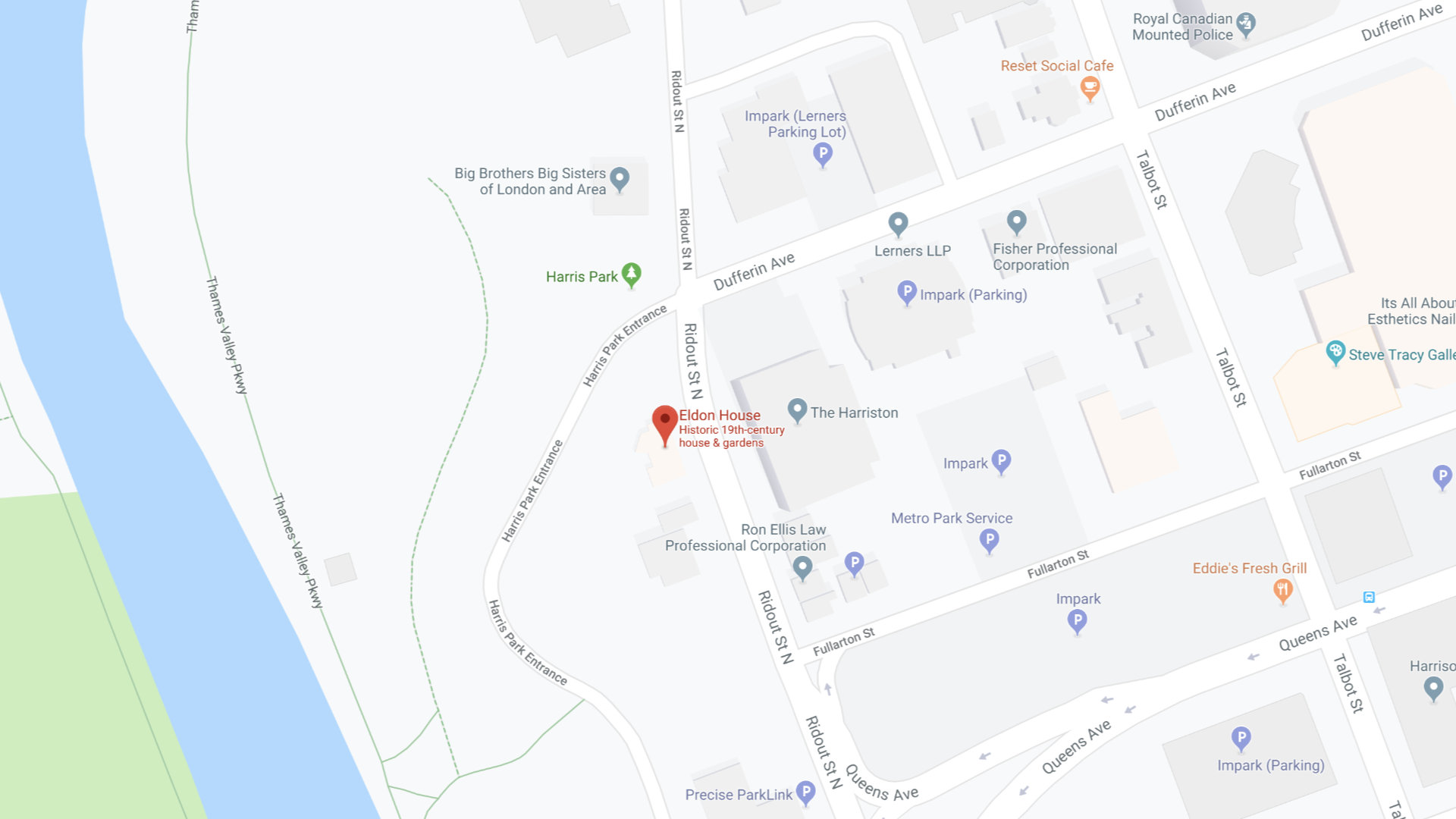Boudica Relief

Country of Origin: likely England
Year: ca. 1890
Materials: Cast Iron
Fireplaces are a central focus in historic homes, and the one in the Eldon House Drawing Room has continued to surprise museum staff over our history. Originally, when the house was donated to the City, the Drawing Room fireplace looked like it had a solid cast iron back. After its donation, one of the curators decided to clean the back of the fireplace, and this cast iron image was discovered. Staff believe that this is a depiction of Boudica.
Boudica was queen of the Iceni tribe from the east coast of Britain. She led a revolt against the Romans who had annexed her late husband’s kingdom in 60 CE. She led forces which attacked three Roman strongholds in Britain dealing massive losses. Allegedly, the revolts almost caused Emperor Nero to abandon Britain altogether. Ultimately, Boudica and her forces were defeated and Boudica was said to have committed suicide or have fallen ill. Two writers, Cassius Dio and Tacitus wrote about the rebellion. In each of their writings, Boudica is pictured as a warrior queen, riding her chariot into battle, and using divination to help her win.
The fireplace back is an optical illusion. The image is of Boudica in her chariot, but when the fire is lit, the flickering flames make the horses look like they are moving. Functionally, this cast iron piece was designed to enhance the heating in a room – reflecting the heat of the fire into the living space, and holding heat longer than a fire was active, radiating into the home.
